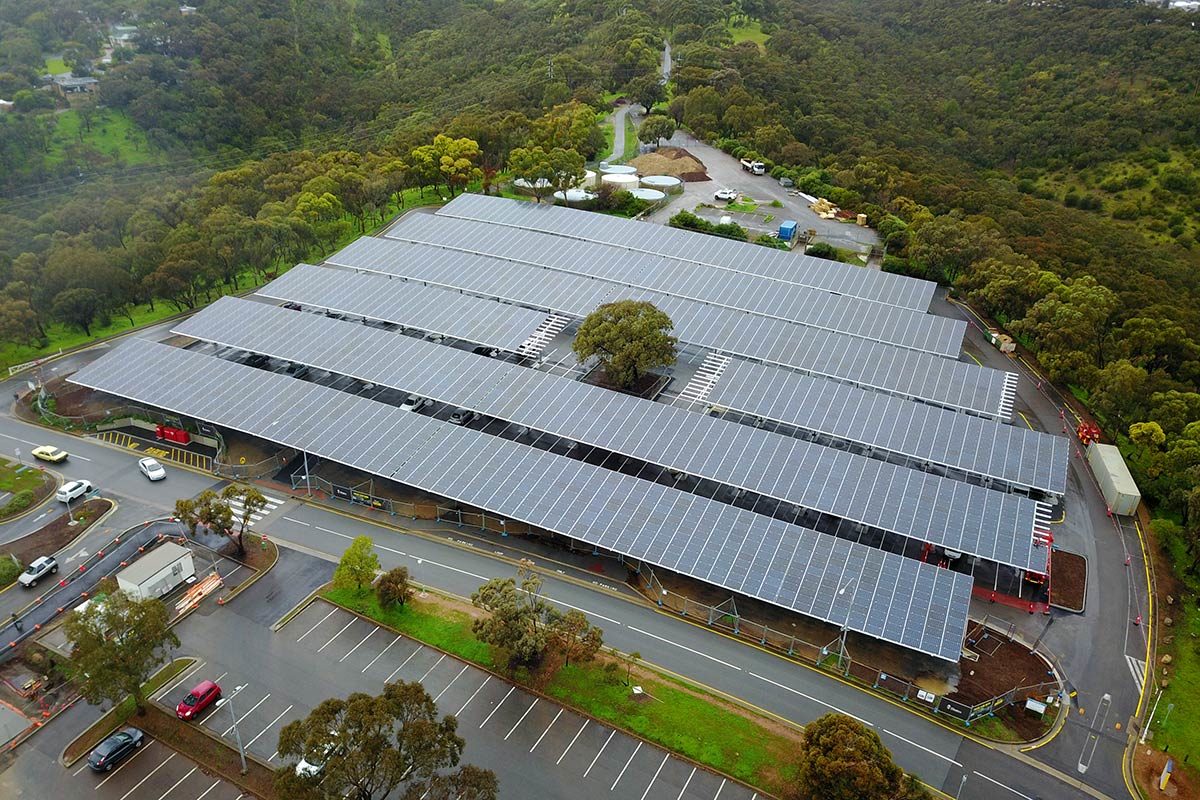South Australia`s Finders University has installed 1.8 MW of solar PV across its campus, including 4136 panels over an existing car park to create a solar car-port, and a further 1681 panels across six roof-tops.
Costing $4.895 million, the project is expected to pay for itself within seven years and will continue to generate energy for the rest of its expected life of 25 years.
The project also sets the scene for the introduction of autonomous campus shuttles run on renewable energy.
“The solar car-port will include a charging dock for recharging planned autonomous shuttles that will ferry people across campus from the future Flinders rail station. We’ve made provision for charging points for plug-in electric vehicles, to encourage their use on campus by providing access to free solar energy, ” Vice-Chancellor Professor Colin Stirling says.
The project adds to existing solar arrays on the University’s new Student Hub, and Law and Commerce Buildings, illustrating Flinders’ increasing commitment to environmental sustainability.
“While we are improving our operational costs, we’re also providing an opportunity for our researchers to test ‘real world’ deployment of renewable energy technologies on our localized electricity grid at Bedford Park, as we create a more robust system with flexible forms of supply,” Professor Stirling says.
This is one of the first projects delivered under Flinders University’s draft sustainability plan, which is aiming for zero net emissions from electricity by 2020. Flinders also aims to reduce campus electricity demand by 30% from a 2015 baseline, through renewable energy generation and storage.
The project, which is scheduled to switch on in October, expands on other recent initiatives such as the Adelaide Airport’s 1.2 MW system, the new Royal Adelaide Hospital 1 MW microgrid, and the 1 MW rooftop system at the Royal Adelaide showgrounds.
Overall, this is yet another Australian university that has turned to solar looking to reduce its electricity demand and reduce its carbon emissions. Other notable projects include: the University of Queensland looking to offset 100% of its energy needs with solar, Monash University‘s 4 MW PV microgrid, Charles Stuart University’s 1.77 MW rooftop solar installation and the University of New South Wales, which is seeking to become 100% solar powered.
This content is protected by copyright and may not be reused. If you want to cooperate with us and would like to reuse some of our content, please contact: editors@pv-magazine.com.









1 comment
By submitting this form you agree to pv magazine using your data for the purposes of publishing your comment.
Your personal data will only be disclosed or otherwise transmitted to third parties for the purposes of spam filtering or if this is necessary for technical maintenance of the website. Any other transfer to third parties will not take place unless this is justified on the basis of applicable data protection regulations or if pv magazine is legally obliged to do so.
You may revoke this consent at any time with effect for the future, in which case your personal data will be deleted immediately. Otherwise, your data will be deleted if pv magazine has processed your request or the purpose of data storage is fulfilled.
Further information on data privacy can be found in our Data Protection Policy.